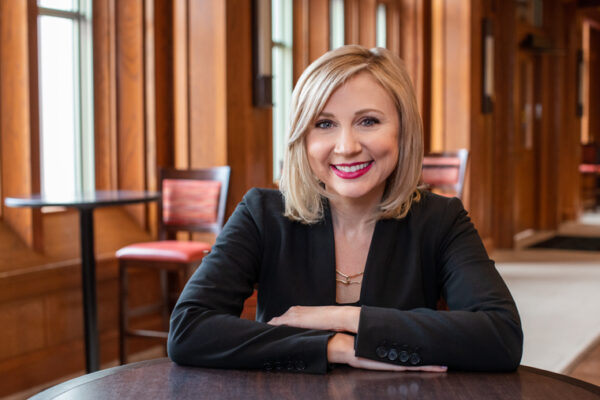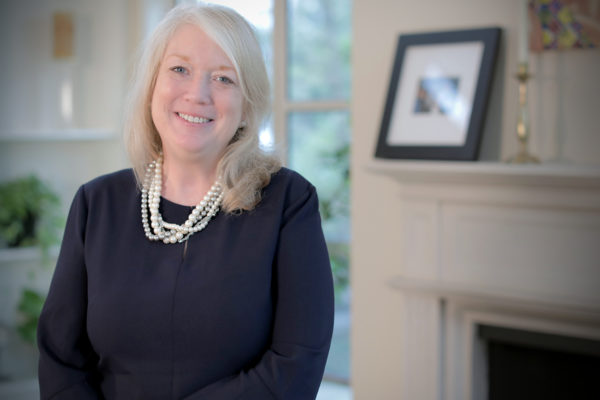Women continue to be underrepresented in top jobs in America’s institutions of higher education, holding less than 40% of executive leadership roles. One notable exception is Washington University in St. Louis, where women comprise 89% of Chancellor Andrew D. Martin’s cabinet and 56% of the university leadership council.
Martin did not set out to fill his nine-member cabinet almost exclusively with women; he simply wanted the best people. To ensure women were in the mix, he sought leaders with impressive talent, not necessarily impressive titles. Martin also established family-friendly policies and created a culture that welcomes diverse ideas.
“A lot of social science shows that women will only apply for a job if they meet every requirement, while men will apply if they meet a few criteria,” said Martin, who assumed the chancellorship in 2019. “From an academic leadership perspective, you have to wonder who you are missing. That’s why I consider it part of my job to find and proactively encourage talented women to take that next step in their career. It’s equally important to develop a deep bench of talent who will be ready to serve as the next generation of higher education decision makers.”
Take, for instance, Shantay Bolton, executive vice chancellor for administration and chief administrative officer, who arrived a year ago from Tulane University, where she served as vice president and deputy chief operating officer.
“I did not fit the typical profile for a chief administrator,” said Bolton, who has spent much of her career in human resources administration. “Many chief administrators grew up in finance or business operations. But my 18 years in human resources taught me that it’s not enough to implement smart business practices. You must adopt policies and processes that promote university culture, create a climate that encourages collaboration and keep everyone focused on a shared vision. And to do that well, you must listen to the voice of the collective. Andrew was very open minded to envisioning how a different leadership style with a different combination of experiences could serve the university’s greater mission.”
Other recent hires include Beverly R. Wendland, provost and executive vice chancellor for academic affairs, who was a dean at Johns Hopkins University, and Anna Gonzalez, vice chancellor for student affairs, who was vice president for student affairs and dean of students at Harvey Mudd College. Recent promotions include Amy B. Kweskin, executive vice chancellor for finance and chief financial officer, and Julie Hail Flory, vice chancellor for marketing and communications. The other cabinet members are: Monica J. Allen, vice chancellor and general counsel; Rebecca Brown, vice chancellor, secretary to the Board of Trustees and Martin’s chief of staff; Pamella A. Henson, executive vice chancellor for university advancement; and David H. Perlmutter, executive vice chancellor for medical affairs and dean of the School of Medicine.
“Andrew is a huge investor in people,” Brown said. “When he sees someone who is up to the task, he helps grow that person by giving them increased responsibility and projects that push them out of their comfort level.”
Brown is one of those people. She met Martin about a decade ago at the Washington University School of Law, where she worked in career services and he served as vice dean. Brown would bring Martin ideas and he would deliver feedback and support. During one of their conversations, Martin told Brown she had what it takes to be a chief of staff — a job he later offered Brown when he was appointed dean of the College of Literature, Science and the Arts at the University of Michigan.

“He sent me three invitations to apply, which I ignored,” Brown recalled. “Finally he called and was like, ‘Are you going to read that or what?’ He helped me see where I fit into this landscape of higher education.”
Martin also has drawn top talent by establishing family-friendly benefits such as extended caregiver leave and practices such as limiting email to work hours. Martin first introduced the policy at the University of Michigan when he was a new dad.
“I asked my staff, ‘What is the biggest drag on our time?’ and the answer was email and this feeling that you always have to be ‘on,’” said Martin, who wrote about the rollout in The Chronicle of Higher Education. “That small change had a big impact. Everyone needs time to go home and be off the clock.”
The cabinet convenes for biweekly meetings, though members regularly meet one on one to tackle issues ranging from student mental health to COVID-19 to the academic calendar. As the university’s top student affairs executive, Gonzalez welcomes the opportunity to advance the student perspective in these meetings. And as a professional, she appreciates the trust Martin places in cabinet members to get the job done.
“A lot of leaders will impose a top-down structure, but Andrew really empowers us to work across our areas to find strategic solutions,” said Gonzalez, who meets individually with several cabinet members. “The result is that we can move quicker and be more nimble.”
The entire university is benefitting from the leadership of female cabinet members, Martin said. Although gender does not determine leadership style, in general, research shows that women tend to be more collaborative and democratic, a phenomenon Martin has observed among cabinet members.
“We’ve all been in meetings where there have been a lot of people in the room, protecting their turf,” Martin said. “Our team, in contrast, works in a highly collaborative, mission-focused manner. Respect, trust and transparency are at the center of everything we do, whether we’re pulling together to deal with student mental health or COVID planning. Quite frankly, there is no other way to be an effective team.”



